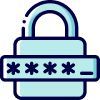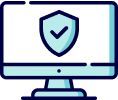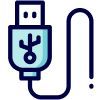
Set up strong passwords
This is simple: start by changing your passwords. The longer your password is, the harder it is to crack. Use modern browsers and password manager plugins to generate secure passwords for you. They are significantly stronger than the password options you may have made up yourself.

Activate two factor authentication
Two Factor Authentication (2FA) adds another security layer to any of your login processes. This significantly reduces the chances of your account getting hacked.
Once you enable 2FA, it is not sufficient for a hacker to know your password. Especially as the second layer usually is time-sensitive. This makes your online accounts a lot more secure.

Check your social networks
Minimise the personal information seen on your various socials. Facebook, Twitter, LinkedIn, Xing, etc. can provide useful information that an interested attacker can use to hack you. Many users conveniently but insecurely use a memorable 6 digit PIN – a birth date for example – to unlock their phone. If this information is listed online, your PIN is too.







